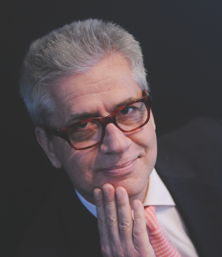Despite the deep financial and humanitarian crisis we are experiencing, citizens are joining forces, combining their creativity and skills and taking action to produce a wide range of actions with the noble goal of actively supporting people who are in need. Human Grid aims to highlight the initiatives of cities that are worthy in order to acquire more supporters and better serve their purpose. The main objective is to highlight good practices that will provide ideas and know-how to citizens and groups of citizens who wish to join an initiative or create their own group/initiative/community. Let’s find out more about this very interesting project from Mr Stathis Haikalis.
The Human Grid (a project by TEDxAthens)
What is the social innovation ‘Human Grid’ about?
Human Grid is about connecting social initiatives and volunteer groups in Greece. Most of them are small teams and they lack experience. By connecting them they can exchange experience, expertise and build up the opportunity to scale their skills and potential. Human Grid has created an online platform where virtual pushpins dot the map, visually mapping out the network of activists, activators and advocates turning ideas worth spreading into ideas in action in Athens.
Why did you (or your partners) start this social innovation?
We started this back in 2013. Our team had realised that quite a few volunteer initiatives had been founded because of the financial crisis in Greece, but that most of them lacked resources, know-how, networking and a collaboration culture. The core idea was to found Human Grid in order to provide advice and support.
How did you come up with the idea? Was a creative or collaborative process involved?
It is mainly a collaborative and networking process. We provide the platform and generate opportunities for making up collaborative projects.
What were you afraid of at the beginning and how (if at all) did you overcome your fear?
The risk was that most of the initiatives would be absorbed by their own projects and have limited room for collaboration and escalation.
What were the beginnings of the social innovation? (i.e. how did you build your initiative, business, NGO from zero?).
In fact, it is an initiative and not a distinct NGO. It is non-profit and there is no plan for business activity. The first step was to build a digital platform, that is a map where we pin the initiatives, so everybody can look for similar initiatives over the same area. The second step was to organise events and meet-ups in order to create the opportunity for meetings, to get to know us better and ask for ideas to collaborate and scale.
How did you attract public attention to the issue you wanted to tackle and make others believe in your purpose and potential?
TEDxAthens events provided the opportunity to build publicity and reputation.
How did you make sure that your idea actually fits the needs of the users?
Human Grid wasn’t a ‘take it or leave it’ project. After launching we asked for users’ proposals and transformed the initial idea according to the users’ feedback and proposals.
How did you raise the money for your idea and what is your advice for others considering DIY fundraising?
A few companies have supported us via their CSR programmes. The fundraising model would be an effective supplementary channel.
How did you scale your social innovation and what tips for scaling could you share?
In Human Grid’s case, the users have supported our initiative and offered their energy, ideas and potential.
How do you change the whole system?
Every year we adopt users’ ideas in order to upgrade the system. Moreover, we regularly upgrade the digital platforms.
What would be the one piece of advice you would give to an aspiring social innovator, a member of the Social Innovation Academy, who has only two things at the moment: a big heart and a willingness to do something?
The first prerequisite they have to check is that there is a societal need to address. The second condition the innovator has to secure is that there is a core team that is keen to support the vision and implement the plan. A third issue is to plan how to raise the money in order to fund the action plan.
Interviewed by Kostas Sotiropoulos

Would you like to learn more from other inspiring social innovators?
Check out the Social Innovation Academy – the first fully online management training programme focusing exclusively on social innovation. If you are interested in keeping up with this project, you can subscribe to our newsletter, become one of our friends or follow us on social media (LinkedIn, Twitter and Facebook). We welcome all requests for collaboration here.


